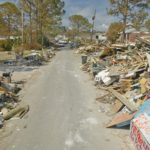Vacation-home buyers face the same headwinds as other buyers, plus pandemic demand ended, and many have return-to-the-office orders, with loan rate locks down 50%.
SEATTLE – Vacation homes were hot during the pandemic as workers freed from the office look for places where they could spread out. But that pace may have cannibalized current demand as some vacation-home buyers jumped into the market a few years earlier than planned. Plus vacation homebuyers today face the same challenges as homesteaders, notably low inventory, and higher home prices and mortgage rates.
Using mortgage-rate locks as a gauge for homebuyer demand, a study found that they were down 47% from pre-pandemic levels on a seasonally adjusted basis in August compared to a 33% decline for primary homes, according to a Redfin study.
August marks the 14th-straight month that second-home demand as hovered at least 30% below pre-pandemic levels, as high housing costs and limited inventory deter would-be buyers. Rate locks for second homes hit a seven-year low in February, dropping to 52% below pre-pandemic levels.
A mortgage-rate lock is an agreement between a homebuyer and lender that allows the homebuyer to lock in an interest rate on a mortgage for a certain period of time; roughly 80% of rate locks result in purchases.
Demand for second homes is also down (19%) year-to-year. Mortgage-rate locks for second homes, which is also bigger than the 14% decline for primary homes.
The pandemic may have also influenced the current market. Vacation home mortgage locks skyrocketed during the pandemic, hitting a peak of 88.5% above pre-pandemic levels in October 2020. Affluent Americans jumped at the chance to snap up second homes with record-low mortgage rates during a time when many of them could work remotely from vacation towns.
Demand for primary homes jumped during that time, too, but the increase was much more modest, reaching a peak of 16% above pre-pandemic levels in late 2020.
Variety of reasons for vacation home drop
- It’s more expensive to buy a second home. The typical home in a seasonal town – where many second homes are located – sells for $564,000, up 5% from a year earlier, though it’s comparable to non-seasonal towns ($421,000), also up 5%. However, mortgage rates for second homes are also typically higher. In addition, the federal government increased second homes’ loan fees in 2022, which sometimes adds tens of thousands of dollars to the cost.
- Many workers are returning to the office. The allure of second homes has diminished as many companies tighten employees’ ability to work remotely.
- Short-term rentals are less attractive. The “rent it out on Airbnb” options may be less attractive than it once was. Some U.S. cities created new regulations, and the maturing short-term rental industry has faced some internal problems during its growth.
- The long-term rental market is cooling. Buying a vacation home to rent out long term is less attractive, too. Although asking rents are still high, many landlords are offering concessions to attract renters. Plus, there’s a rising number of vacancies for landlords to fill with many new units set to hit the market soon.
© 2023 Florida Realtors®
©Florida Realtors®
Source link



